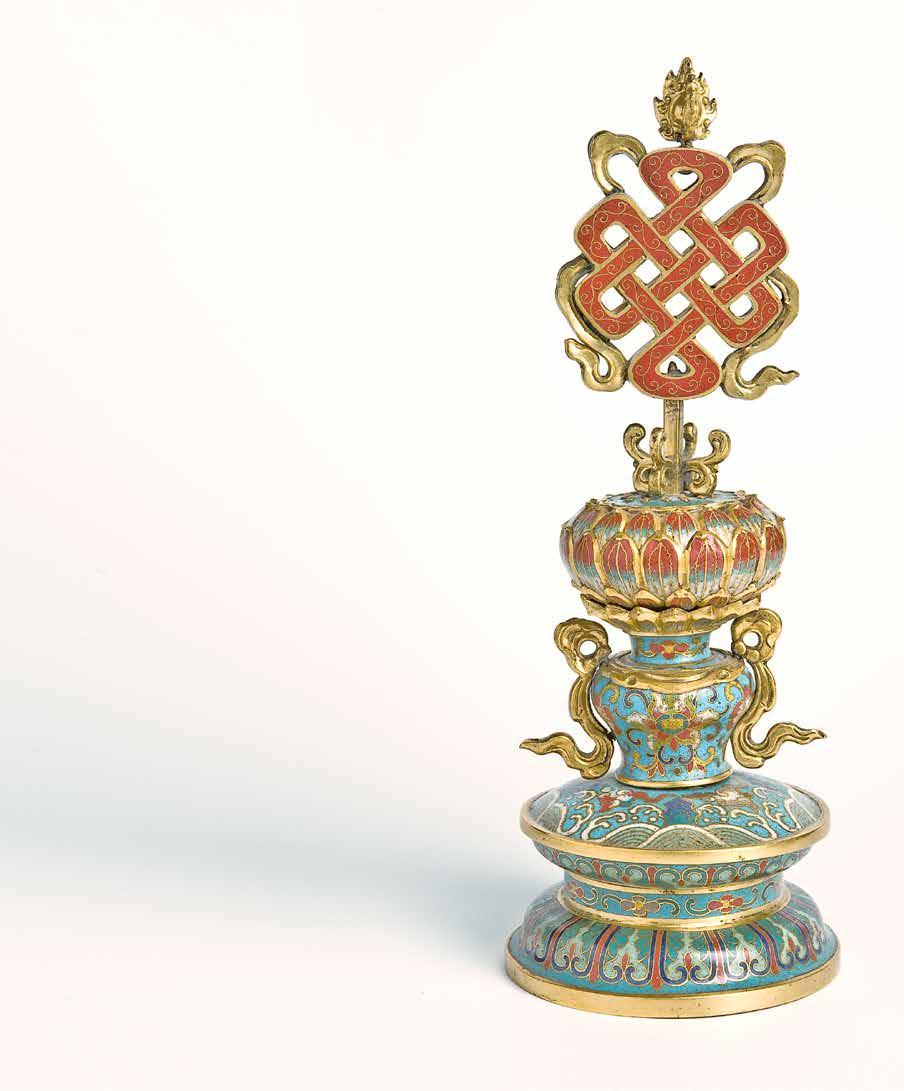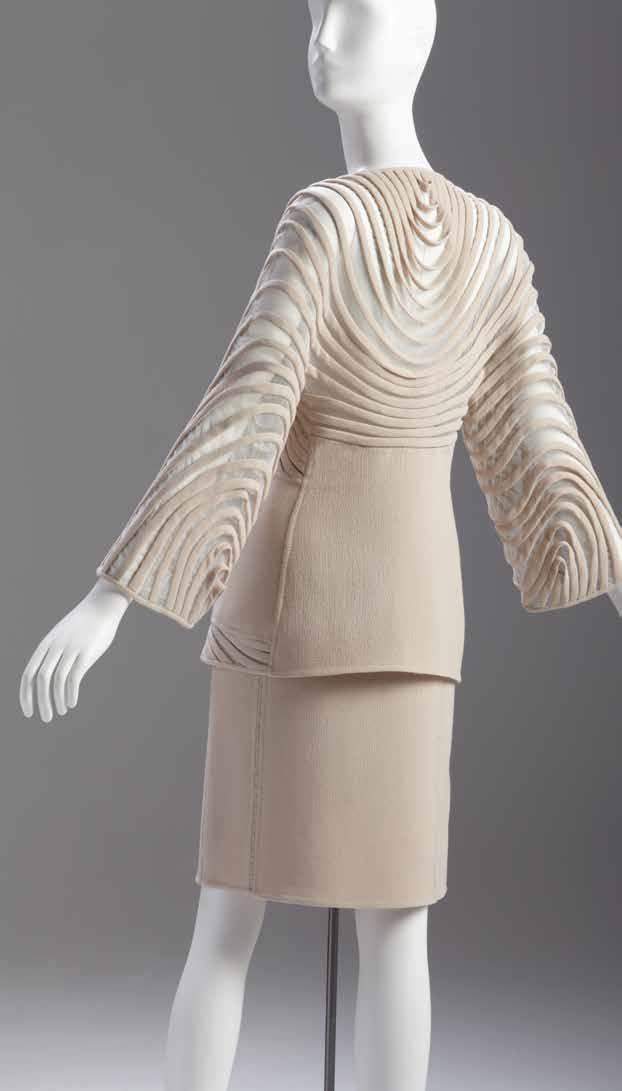
9 minute read
Fearless Fashion: Rudi Gernreich


FASHION OF THE FREE BORN OF THEBRAVE

FEARLESS FASHION: RUDI GERNREICH
APRIL 7 – SEPTEMBER 26, 2021 STEELE GALLERY

RUDI WAS SO MUCH MORE THAN A FASHION DESIGNER. HE WAS A POLITICAL COMMENTATOR.

– HUMBERTO LEON, FASHION DESIGNER


Acclaimed designer Rudolph “Rudi” Gernreich once prophesized, “Fashion will go out of fashion.” This prediction, of a day when we would all wear minimal, utilitarian clothes that not just embrace but celebrate the body’s natural form, has yet to be realized; however, Gernreich foresaw and anticipated through his work other major cultural shifts that continue to manifest today. His inventions like the thong, the “monokini” topless swimsuit, and the unisex caftan, in fact, seem even more at home in the cultural zeitgeist now than in the decade that bore them.

From April 7 through September 26, 2021, Arizona audiences are invited to experience the late designer’s socially impactful work in Fearless Fashion: Rudi Gernreich at Phoenix Art Museum. Organized by the Skirball Cultural Center, Los Angeles, the exhibition presents more than 80 dynamic and forward-thinking fashion designs, including the monokini that once spurred Pope Paul VI to label Gernreich an enemy of the Catholic Church. A collection of original sketches, letters, personal papers, photographs, press clippings, and newly filmed oral histories of Gernreich’s friends and colleagues then help to provide a broader understanding of the designer’s life and enduring influence. Born in 1922 in Vienna, Austria, Gernreich, who was Jewish, fled Nazi oppression as a teen and immigrated to Los Angeles. After he was arrested in LA in the early 1950s for being gay, Gernreich committed himself to a life of fashion, art, and social justice, joining the interracial Lester Horton Dance Theatre, for whom he danced and designed costumes, and becoming the second founding member of the Mattachine Society, one of the earliest gay-rights organizations and founded by labor activist Harry Hay. Throughout his career, Gernreich would continue to seek social change and promote a truer expression of self through fashion, creating trailblazing designs that prioritized inclusivity, non-conformity, liberation, and movement. He would die in 1985 of lung cancer, but his creations would live on and lay the groundwork for contemporary conversations about beauty, gender, and identity.
On view in the Museum’s premier Steele Gallery, the colorful Fearless Fashion is flush with garments clearly of the 1960s and 1970s; mod, Pop, and Op art vibes abound and harken back to the time of Twiggy and Nico, the bouncy bob and the birth of the miniskirt. Visitors, however, are also met with many designs that are quite familiar, if not central, to the contemporary fashion scape. These works illuminate how Gernreich was both of and before his time. CONTINUED ON PAGE 24
CHANNEL THOSE RUDI GERNREICH VIBES WITH THESE ITEMS FROM THE MUSEUM STORE.
TWINKLE TOTE
$130.50 (MEMBER) | $145 (NON-MEMBER) Inspired by colorful European candies and pastries, this vibrant bag made of glitter vinyl is sure to turn heads.

LIGHT, BRIGHT
PRICES VARY Make a fashion statement with these luminous Lucite jewelry items, hand-bent by Canadian designer Corey Moranis.

FOR MORE INFORMATION, VISIT PHXART.ORG/SHOP. One such enduring Gerneich original in Fearless Fashion is the thong, a scant undergarment that the designer debuted in the 1970s to protest the city of Los Angeles’ ban on nude sunbathing. For decades now, the relevance and ubiquity of the intimate have ebbed and flowed. After Sisqó’s 1999 chart-topping “Thong Song,” the design became so popular again that Victoria’s Secret saw an 80% increase in thong sales. Then, the likes of Britney Spears, Paris Hilton, and Christina Aguilera started wearing thongs high and proud to render the garment’s side straps visible above their low-slung denim jeans, and this visi-thong look naturally filtered down into the masses. Thong popularity eventually declined into the early 2000s and 2010s, with models and trendsetters instead opting for fuller-coverage underwear to sport beneath sheer, formal, red-carpet gowns and ready-to-wear brands touting the comfort and practicality of mid- and high-rise briefs. Now, however, fashion is experiencing a visible-thong revival, which may just have Britney, Paris, and Christina rolling their eyes and thinking, “Been there, done that.” Over the past year, Jennifer Lopez and supermodels Bella Hadid and Hailey Bieber have posted photos of themselves wearing the high-rise thong look. This summer, rappers Cardi B and Megan Thee Stallion dropped the body-positive, sex-forward, lady anthem of the season (if not the decade), with promotional images of them wearing thongs and very little else. On the runway, Versace, Supriya Lele, and Maximilian Davis have featured pants and skirts with faux visible-thong straps in their Spring/Summer 2021 lines. And to think, neither these modern-day hit songs nor internet-breaking looks, including one from Beyoncé’s December 2020 British Vogue spread, would be possible without the vision and daring of Rudi Gernreich. Another example of a design in the exhibition that contemporary audiences will recognize from its regular appearance on Capitol Hill and television talk shows, at office meetings and formal family occasions is the women’s pantsuit. Gernreich’s “Marlene Dietrich” pantsuit—named for the notoriously gender-bending actress and singer—was controversial in its day. Though created at a time when arresting women for wearing pants was finally going out of style, the champagne-colored satin ensemble faced rejection nonetheless; it was banned from appearing on the runway during the 1964 Coty American Fashion Critics’ Awards Fashion Show, under the premise that American society was not ready for women in pants. Gernreich’s creation of the thong and the women’s pantsuit demonstrated his commitment to supporting women’s sexual and mental liberation; through his designs, he hoped to spark change in how women viewed and thought about their roles and value in society, desiring them to free themselves from the confines of the patriarchal structure. “[H]e loved women,” said Léon Bing, one of Gerneich’s go-to models in the 1960s, in an interview with Vanity Fair. “He wanted to make them both wonderful looking and at the same time comfortable with it.” Model Barbara Ford, in an interview with Women’s Wear Daily, also recalls this about Gernreich, who once told her, “You can do what you want as long as you are comfortable.” Ford said that when she worked with the designer, she was always free to choose her own hair and makeup looks for his runway shows and photoshoots, a departure from the experience of most models who are at the mercy of designers and stylists. Gernreich’s artistic and social vision, however, also made space for the liberation of all. “The future will involve unisex,” he once said. “Men are going to wear skirts, and women are going to wear pants.” Gernreich’s idea of a modern and genderfluid—or, perhaps, gender-neutral—family is on display in the exhibition’s “Unisex Solidarity” section. Two adult-sized mannequins are accompanied by a child-sized figure, and all are wearing colorful, geometric caftans void of any and all markers that would hint at the wearer’s sex or gender, such as cinched waistlines, shorter hems, or darting to accommodate wide shoulders or breasts. Through these garments and many others, all of which confront societal norms and expectations both of their day and today, Fearless Fashion
[GERNREICH]…TWISTED THE ARM OF HIGH FASHION UNTIL IT YELPED OUT A SQUEAL OF SEXUALITY . – L É O N B I N G , A U T H O R + F O R M E R M O D E L


boldly argues that style should promote freedom and authenticity and welcome everyone, regardless of race, religion, gender, sexuality, and body type, to explore their truest selves.
“This is such a timely exhibition,” said Helen Jean, the Museum’s Jacquie Dorrance Curator of Fashion Design, who organized the presentation of the Skirball’s exhibition Fearless Fashion at Phoenix Art Museum. “It underscores Gernreich’s rejection of conventional ideas of identity and his commitment to promoting gender fluidity, body positivity, and the equality and inherent beauty of all people. This inclusive approach to humanism and the desire to empower others to help define who they are and who they are not through the clothing they choose to wear is something that will resonate with contemporary audiences, many of whom are still advocating for the same issues and rights Gernreich fought for through his work, blazing a trail decades earlier.”
Fearless Fashion: Rudi Gernreich is organized by the Skirball Cultural Center, Los Angeles. Its premiere at Phoenix Art Museum is made possible through the generosity of the Jacquie Dorrance Curator of Fashion Design Endowment, The Kelly Ellman Fashion Design Endowment Fund, Lee and Mike Cohn, The Virginia M. Ullman Foundation, The Arizona Republic | azcentral, and Arizona Costume Institute, with additional support from the Museum’s Circles of Support and Museum Members.
image credits: (page 20) Peggy Moffitt modeling ensemble designed by Rudi Gernreich, Resort 1968 collection. Photograph © William Claxton, LLC, courtesy of Demont Photo Management & Fahey/Klein Gallery Los Angeles, with permission of the Rudi Gernreich trademark; Rudi Gernreich fashions at the Wiltern, 1985. Photo Collection, Los Angeles Public Library. (page 22) Rudi Gernreich at his office in Los Angeles, 1966. Photograph © William Claxton, LLC, courtesy of Demont Photo Management & Fahey/Klein Gallery Los Angeles, with permission of the Rudi Gernreich trademark. (page 23, left to right) Peggy Moffitt modeling trompe l’oeil jumpsuit by Rudi Gernreich, Spring/Summer 1972 collection. Photograph © William Claxton, LLC, courtesy of Demont Photo Management & Fahey/Klein Gallery Los Angeles, with permission of the Rudi Gernreich trademark; Rudi Gernreich holding bolts of fabric, 1966. Photograph © William Claxton, LLC, courtesy of Demont Photo Management & Fahey/Klein Gallery Los Angeles, with permission of the Rudi Gernreich trademark; Dancers Loretta Livingston and Kurt Weinheimer in “duotard” costume designed by Rudi Gernreich for the Lewitzky Dance Company’s Inscape production, 1976. Photograph © Daniel Esgro. (page 24) Image courtesy of Andrea Carol-Libman; image courtesty of Corey Moranis. (page 25) Dancer Serena Richardson in costume designed by Rudi Gernreich for the Lewitzky Dance Company’s Inscape production, 1976. Photograph © Daniel Esgro. (page 26) Peggy Moffitt modeling dress designed by Rudi Gernreich, Fall 1971 collection. Photograph © William Claxton, LLC, courtesy of Demont Photo Management & Fahey/Klein Gallery Los Angeles, with permission of the Rudi Gernreich trademark. (page 27, top) Rudi Gernreich for Harmon Knitwear. Caftan, 1970. Wool knit. (Center) Rudi Gernreich. Caftan, c. 1973. Printed cotton plain weave. (Right) Rudi Gernreich for Harmon Knitwear. Caftan, 1970. Wool knit. Collection of Peggy Moffitt. Photo by Robert Wedemeyer. (page 27, bottom) Peggy Moffitt modeling the topless swim suit designed by Rudi Gernreich, 1964 . Photograph © William Claxton, LLC, courtesy of Demont Photo Management & Fahey/Klein Gallery Los Angeles, with permission of the Rudi Gernreich trademark; Rudi Gernreich laying out a pattern, 1966. Photograph © William Claxton, LLC, courtesy of Demont Photo Management & Fahey/Klein Gallery Los Angeles, with permission of the Rudi Gernreich trademark.











